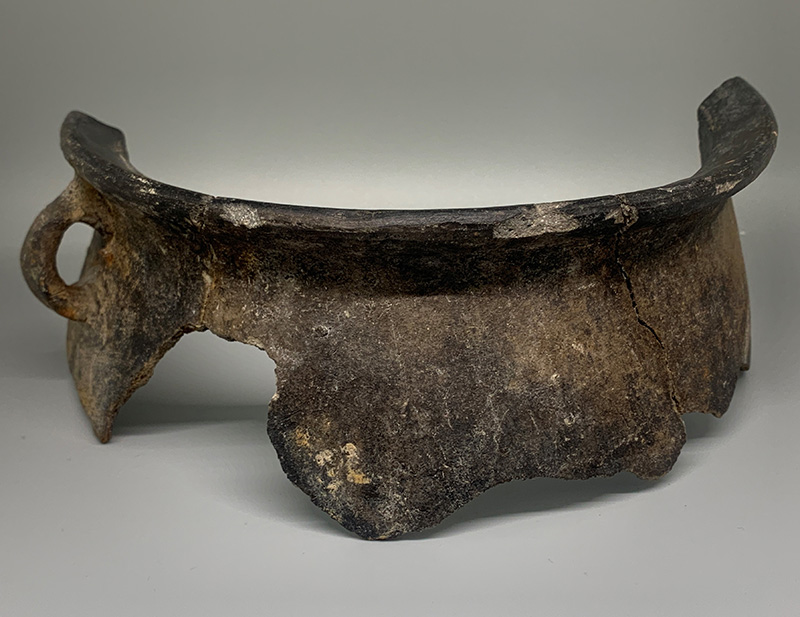
| Maker | Unknown |
| Date of Creation | Late 18th century |
| Location | Unknown (Used in Philadelphia, Pennsylvania) |
| Materials | Clay, sand temper, shell temper |
| Institution | National Park Service, Independence National Historical Park |
| Credit Line | Independence National Historical Park |
| Accession Number | INDE-04144 |
| Photo Credit | Deborah Miller |
Colonoware is a hand-built, unglazed, pit-fired earthenware made of locally sourced clay that is most often found at 18th-century sites associated with the enslaved in the American south. While the vessels vary in size and shape, most have traditionally European forms, like this cooking pot that was discovered during excavations at the National Constitution Center site in Old City, Philadelphia. The colonoware pot was found in a privy filled with trash from nearby households including those of free African Americans, Ann Pounder Martin and Isaac Till, who lived at the site in the 1780s. Till, along with his wife Hannah, had recently purchased their freedom after having been allowed to earn wages while being leased to George Washington as cooks during the American Revolution. Did they or members of their households own the pot? Did they make it or bring it to Philadelphia from somewhere else? We’ll likely never know the answers, but as a uniquely American ceramic, it embodies the unification of cultural traditions in a society that included both the free and enslaved. It’s presence on the Philadelphia landscape just two blocks from Independence Hall is a powerful reminder of the paradox of liberty and equality for so many Americans.
